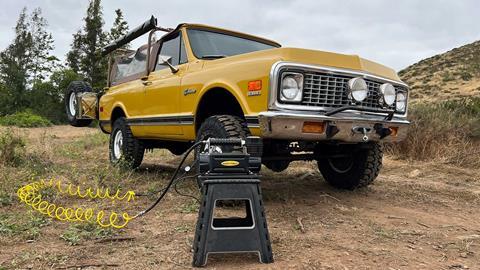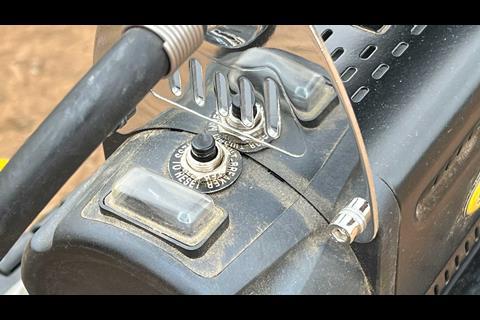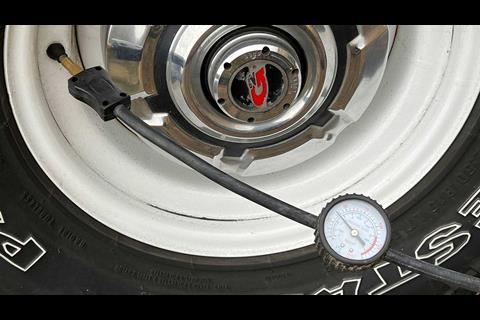In 1888 John Boyd Dunlop created the first functional pneumatic tire. The goal was to soften the ride of his son’s tricycle to reduce headaches from harsh vibration. It didn’t take long before automobiles would adapt this tire technology and the constant search for compressed air was on.
12v Portable Compressors
I think we’ve all noticed a low tire on our vehicles and headed to the service station in search of compressed air, only to find the hose to the air compressor missing, or the compressor takes all your spare change, but the pump doesn’t start.

This frustration starts the search for a portable solution to keep in your rig when you’re in the need of a top off. What compressor do you need? How big should it be? Where do we store it when it’s not being used? Let’s dig into the basics of the 12v compressor.
The system is created from four main parts. The heart of the compressor is a piston cylinder much like a gas engine that pumps air passed a reed valve. The larger the cylinder volume the more volume of air you can create per stroke. This needs to be turned by a 12v electric motor.
The amperage of the motor usually dictates how well the compressor will perform. In order to power the motor, electricity needs to travel from allegator clips down the cord to a master fuse to the DC motor completing the circuit. The last component to the system is the hose. The hose and fittings must be matched to the volume of air, so the compressor works efficiently to pump up your tires.
How To Pick A Compressor
Now that we know the systems of a compressor, let’s talk about ratings that will be helpful while you are shopping. First up, CFM (Cubic Feet per Minute) This is the amount of volume you can put in a tire in one minute.
For example, a 2.5 CFM compressor fills a tire 31’’ tire from 15 psi to 30 psi in 2 minutes. The 5 CFM compressor fills that same tire in one minute. So’ if you have a heavy rig, and need 50 psi street pressure, the 5 CFM compressor will get you up and running in no time.
The next rating is duty cycle. The duty cycle refers to the safe runtime before the motor or compressor overheats. Duty cycle is often based on one hour of duty. So, a compressor that can run for 20 minutes would be 30% duty cycle.
A compressor that runs safely for 1 hour is 100% duty cycle. Last, is amperage. This is where the horsepower comes from. Most small compressors run about 30 amps. The bigger compressors run 75 amps. The larger amperage spins the motor faster and increases the compressor output. It also increases the heat generated so the duty cycle is often lower, but who cares as long as all tires reach street pressure before exceeding the duty cycle.
Onboard Air
So now that you are an expert on how compressors work, what compressor do you want? While portable compressors are handy, the clean-up takes more time, the compressor kit takes valuable interior space, and the parts are hot to the touch. This brings us onboard air.

The idea of hard mounting the compressor under the hood saves space, has a far better connection to the battery and has the ability to run other accessories like lockers, air tools, or just blow up an air mattress. In the world of onboard air, the possibilities are endless.
Air fittings can be run to each wheel well, systems can be installed to shut off at a controlled pressure, and air can be stored in a tank to decrease air up time at the end of the trail.
Sources
Smittybilt: smittybilt.com
ARB: arbusa.com
Access More Great Stories!
This article originally appeared in OVR Issue 06. For more informative articles like this, consider subscribing to OVR Magazine in print or digital versions here. You can also find the print edition of OVR at your local newsstand by using our Magazine Finder.


























No comments yet